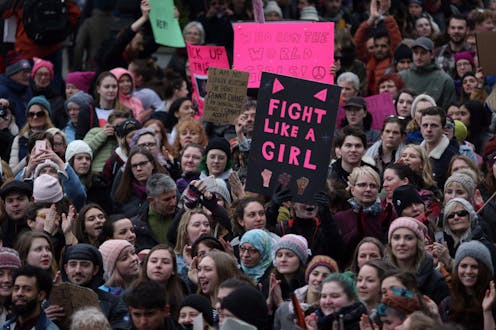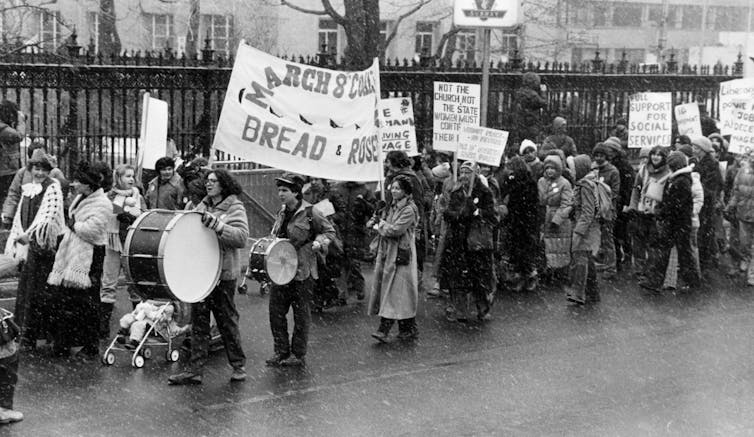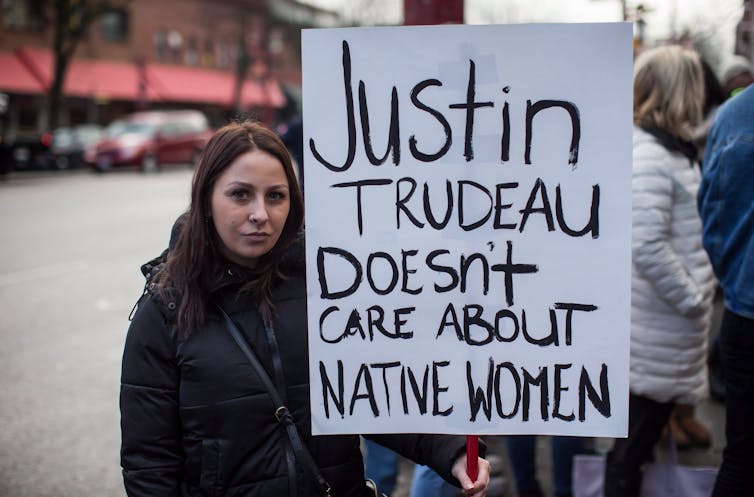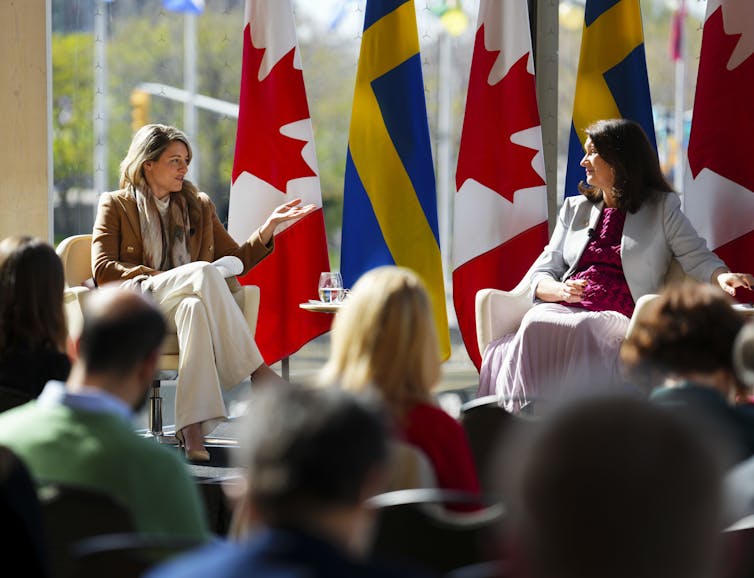
In 2017, thousands of women gathered in Washington, D.C., in protest of Donald Trump’s inauguration as president of the United States.
The protest took place across multiple cites in the U.S. Trump’s presidency exposed a polarized nation, divided by an election that raised unsettling questions about out-of-touch elites and barriers to women’s ambitions.
Trump expressed misogynistic views during the presidential campaign, with slurs about Megyn Kelly, Carly Fiorina and Hillary Clinton. These public remarks reaffirmed the patriarchal political power structures in North America that are often manifested through acts of dominance and privilege more broadly in society.
American race scholar Patricia Hills Collins argues that the power of nationalism likely contributes to sexist and racist thinking. Understanding the intersecting roles of politics, race and gender highlights some of the mechanisms at work in political systems.
The massive anti-Trump demonstrations drew support from women in Canada, who held their own protests in solidarity. Canadian women did so again more recently, showing support for women south of the border over the U.S. Supreme Court’s overturn of Roe v. Wade.
History of the women’s movement
During the abolition and anti-slavery movement, images of white women were used to represent all women, even though the fight for women’s rights was not a single, unified struggle.
Angela Davis, an American political activist, scholar and author, has argued that racialized and working-class women were excluded from rights movements led by white women.
She noted that the evolving 19th-century ideology of femininity portrayed white women as the saviours fighting for all women’s issues while racialized women were practically anomalies. Racism and sexism were tied to the unique predicaments of racialized people. Ultimately, white feminists were perpetrating the exact same oppression on Black and racialized women that they were fighting against.
The Canadian women’s movement, and the representation of womanhood in Canada, is no exception.

It is defined by the social class of able-bodied, educated, white, Christian, Anglo-Saxon women. This results in an unrealistic portrayal of women’s various lived experiences and struggles, contributing to a focus on issues that are reflective of their own common lived experience as white women.
In Canada, as in many other colonial nations, feminists historically wanted a piece of the political and economic power men had. They wanted a place within the existing system, whereas the struggle of women of other intersecting identities involved fighting the oppressor.
Focus isn’t inclusive
The dominance of white women in the Canadian women’s movement is obvious when examining the issues it prioritizes. It’s been largely silent, for example, on Canadian issues such as forced sterilization for Black and Indigenous women.
There have been no mass protests by the mainstream women’s movement to demand pay equity in Canada, or for the unmarked graves found at residential schools.
There’s been no national advocacy to stop increasing violence against women, a scourge that was exacerbated during the COVID-19 pandemic. There have been no massive, Canada-wide demonstrations to support BIPOC communities in their fight against systematic barriers.
Read more: Canada's shadow pandemic: Femicide
When Justin Trudeau, a self-described feminist, won the federal election in 2015, it seemed a new political era for women was beginning. Or so we thought.
Since then, academics and the media have called out the Liberals, saying their talk on women’s rights hasn’t been matched with action.

What does this tell us about Canadian feminism? White saviour feminism isn’t helping women locally or abroad.
Canadians habitually call out other foreign nations’ mistreatment of women, but rarely shift their lens to address the existing oppression of Canadian women, from murdered and missing Indigenous women and girls to pay equity or sexist cultures within our national sports.
Canadian feminists should obviously support their sisters around the world. But they still have a long way to go before they can start prescribing solutions, especially if they do so via white saviourism and dismissiveness about the priorities of racialized women.
Colonial past
White saviourism has its roots in Canada’s colonial past — the residential school system was regarded as a way to “save” Indigenous children, after all.
But white saviourism is also part of white male supremacy culture. It’s hindered women’s equality by erasing and silencing the voices of the marginalized and by isolating those who don’t fit the image of the liberal, white, able-bodied, educated woman.
Just as colonialism created different racial categories among citizens, white saviourism has done the same thing. Whiteness is a symbol of success and a desirable identity in terms of everyday economic and cultural practices.
There are an array of structural barriers against women within the cultural, political and social system itself.
That includes various empowerment debates that blame individual women for not succeeding and victimizing veiled women without admitting how white culture itself is fixated on the male gaze, and sexualization and objectification that fuels rape culture.
Here and abroad, Canada could work towards recognizing systemic discrimination while encouraging and supporting other women in foreign countries to rise up in the manner they choose.
A feminist agenda seems only to be the focus of Canadian government departments like Global Affairs, the first ministry to apply a overtly feminist foreign policy. We do not see the same approach at Canadian Heritage or social or agricultural departments and agencies.

Transnational and global feminism
By focusing on issues that cater to privileged white people, more complex issues are erased and forgotten, including systemic issues in women’s health, police brutality towards racialized women, poverty and access to services.
Alternatively, a transnational feminist perspective would fight for women’s rights and gender equality across national boundaries and work in collaboration with women from other countries.
The diverse experiences of women around the world have an impact on gendered relationships everywhere. Transnational feminism would take into account issues of gender, language, imperialism, colonialism, economics, human rights, race and nationalism. It requires analyzing the experiences within and across multiple regions, and their interdependencies.
If we don’t take a transnational feminist approach, we risk continuing a colonial culture that requires white saviourism practices. That means we’re actively, albeit unknowingly, participating in reproducing systemic barriers for women in Canada and around the world.
The authors do not work for, consult, own shares in or receive funding from any company or organisation that would benefit from this article, and have disclosed no relevant affiliations beyond their academic appointment.
This article was originally published on The Conversation. Read the original article.







